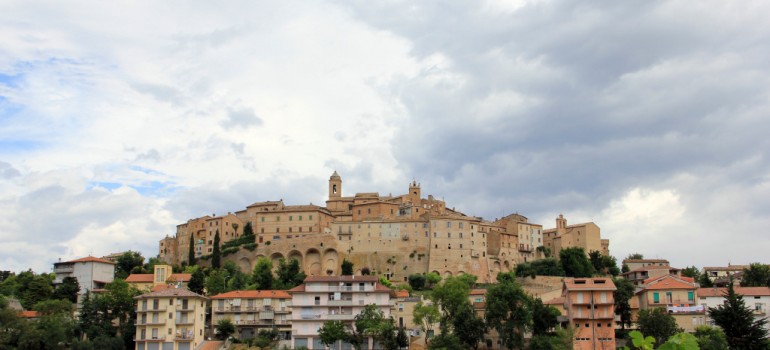
Cossignano’s nickname is “the navel of the Piceno”: it is situated on the hillside between the headwaters of the rivers Menocchia and Tesino, at 400 m. above s. l.. Numerous archeological findings prove that Cossignano was a flourishing center of the picena civilization. Its ancient name was Castellum Martis. In roman times the area was crossed by the road “Asculum Firmum” and therefore it is possible that its name comes from the ancient noble holders of a “praedium cossinianum”, fraction of the ager Romanus, owned by members of a powerful roman family (Cossinii Tivoli). Cossignano maintained its independence until 268 B. C. when it was incorporated into the Roman State. In the Christian and Medieval age Cossignano is tied to the Papal State and was always Guelph. In 1396 Andrea Tomacelli, the governor of the region, decided to spend some times in Cossignano, so it became the capital of the region he governed. In 1581 Cossignano adopted its statute. When the Kingdom of Italy was established the local intellectuals defended and maintained the autonomy of the municipality which was in danger because of its small dimensions. The old part of the town is bounded by the walls named “Grottoni” because of their shape, which contain buildings of the great interest: the Church of Santa Maria Assunta, in neoclassic style, founded in 1792 on the site of the ancient church of St. Maria, decorated in 1937 by Dante De Carolis. In the Town Hall and Civic Tower is the historical archive, a painting of St. George, and a red shirt which belonged to one of Garibaldi’s soldiers, Placido Malavolta. The well preserved Gate of Levante or Gate of San Giorgio is the evidence of the ancient walls of the castle. The Church of the Annunciation, the oldest part of which dates 1265, contains many valuable works including one by Vincenzo Pagani: an altarpiece painted in oil depicting St. Anthony Abbot, St. Anthony of Padua and St. Job. In December 2012 the Church was given the award of “Italian Wonder” by the National Youth Forum. Outside the castle walls there are: “la casa di terra” (House of earth) and “Fonte del piano” a water storage tank used in the past to water livestock and Villa Trocchi, an elegant residence with park, garden, guardian’s home, stables, barns and cellars built in the early twentieth century.